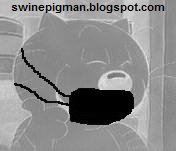Novel H1N1 Vaccination Recommendations
July 30, 2009, 7:00 PM ET
Content source: Centers for Disease Control and Prevention With the new H1N1 virus continuing to cause illness, hospitalizations and deaths in the US during the normally flu-free summer months and some uncertainty about what the upcoming flu season might bring, CDC's Advisory Committee on Immunization Practices has taken an important step in preparations for a voluntary novel H1N1 vaccination effort to counter a possibly severe upcoming flu season. On July 29, ACIP met to consider who should receive novel H1N1 vaccine when it becomes available.
Novel H1N1 Vaccine
Every flu season has the potential to cause a lot of illness, doctor’s visits, hospitalizations and deaths. CDC is concerned that the new H1N1 flu virus could result in a particularly severe flu season this year. Vaccines are the best tool we have to prevent influenza. CDC hopes that people will start to go out and get vaccinated against seasonal influenza as soon as vaccines become available at their doctor’s offices and in their communities (this may be as early as August for some). The seasonal flu vaccine is unlikely to provide protection against novel H1N1 influenza. However a novel H1N1 vaccine is currently in production and may be ready for the public in the fall. The novel H1N1 vaccine is not intended to replace the seasonal flu vaccine – it is intended to be used along-side seasonal flu vaccine.
CDC’s Advisory Committee on Immunization Practices (ACIP), a panel made up of medical and public health experts, met July 29, 2009, to make recommendations on who should receive the new H1N1 vaccine when it becomes available. While some issues are still unknown, such as how severe the virus will be during the fall and winter months, the ACIP considered several factors, including current disease patterns, populations most at-risk for severe illness based on current trends in illness, hospitalizations and deaths, how much vaccine is expected to be available, and the timing of vaccine availability.
The groups recommended to receive the novel H1N1 influenza vaccine include:
Pregnant women because they are at higher risk of complications and can potentially provide protection to infants who cannot be vaccinated;
Household contacts and caregivers for children younger than 6 months of age because younger infants are at higher risk of influenza-related complications and cannot be vaccinated. Vaccination of those in close contact with infants less than 6 months old might help protect infants by “cocooning” them from the virus;
Healthcare and emergency medical services personnel because infections among healthcare workers have been reported and this can be a potential source of infection for vulnerable patients. Also, increased absenteeism in this population could reduce healthcare system capacity;
All people from 6 months through 24 years of age
Children from 6 months through 18 years of age because we have seen many cases of novel H1N1 influenza in children and they are in close contact with each other in school and day care settings, which increases the likelihood of disease spread, and
Young adults 19 through 24 years of age because we have seen many cases of novel H1N1 influenza in these healthy young adults and they often live, work, and study in close proximity, and they are a frequently mobile population; and,
Persons aged 25 through 64 years who have health conditions associated with higher risk of medical complications from influenza.
We do not expect that there will be a shortage of novel H1N1 vaccine, but flu vaccine availability and demand can be unpredictable and there is some possibility that initially, the vaccine will be available in limited quantities. So, the ACIP also made recommendations regarding which people within the groups listed above should be prioritized if the vaccine is initially available in extremely limited quantities. For more information see the CDC press release CDC Advisors Make Recommendations for Use of Vaccine Against Novel H1N1.
Once the demand for vaccine for the prioritized groups has been met at the local level, programs and providers should also begin vaccinating everyone from the ages of 25 through 64 years. Current studies indicate that the risk for infection among persons age 65 or older is less than the risk for younger age groups. However, once vaccine demand among younger age groups has been met, programs and providers should offer vaccination to people 65 or older.
Links to non-federal organizations are provided solely as a service to our users. These links do not constitute an endorsement of these organizations or their programs by CDC or the federal government, and none should be inferred. CDC is not responsible for the content of the individual organization Web pages found at these links.












